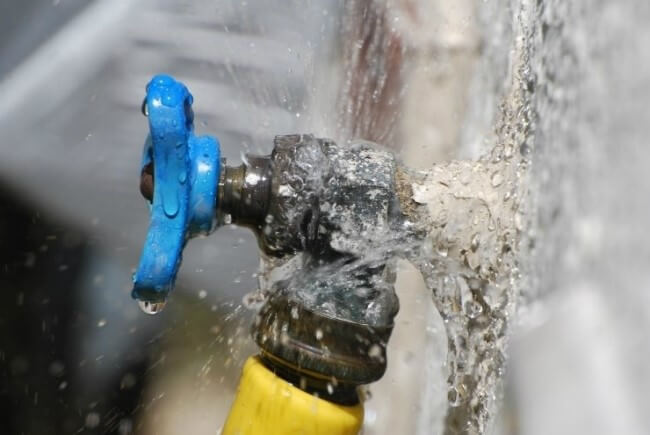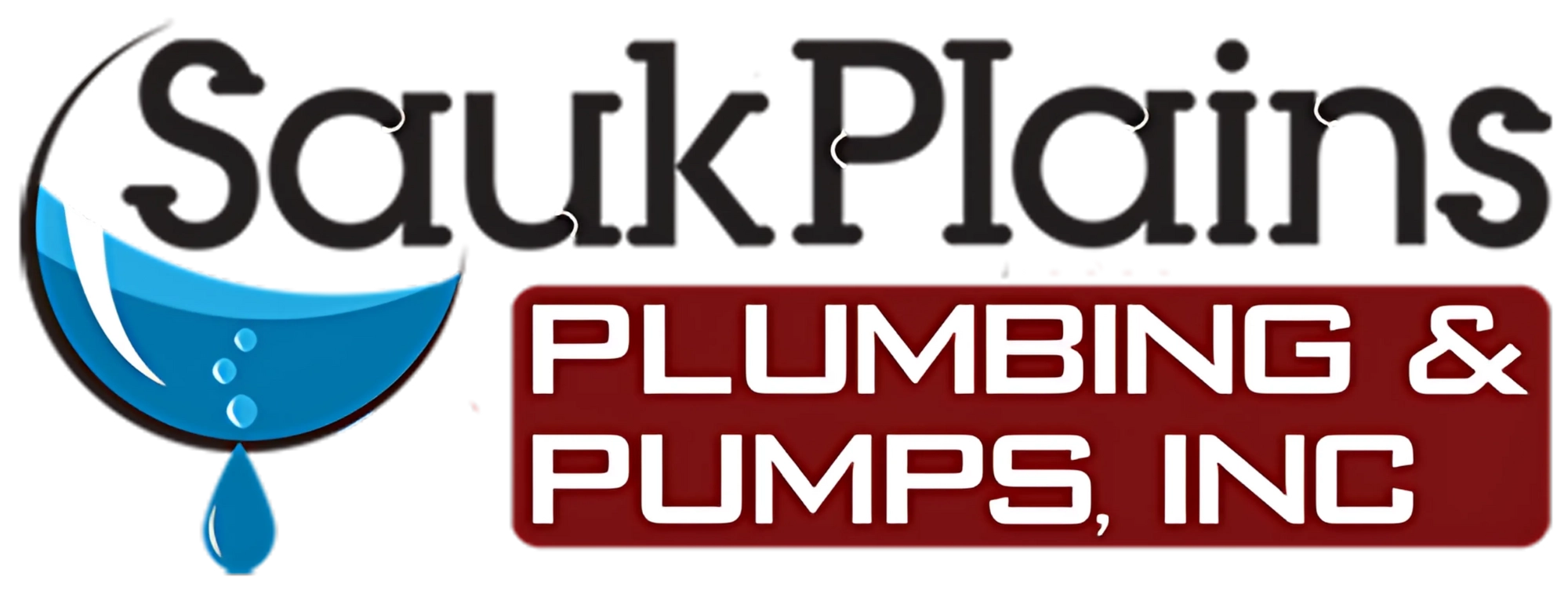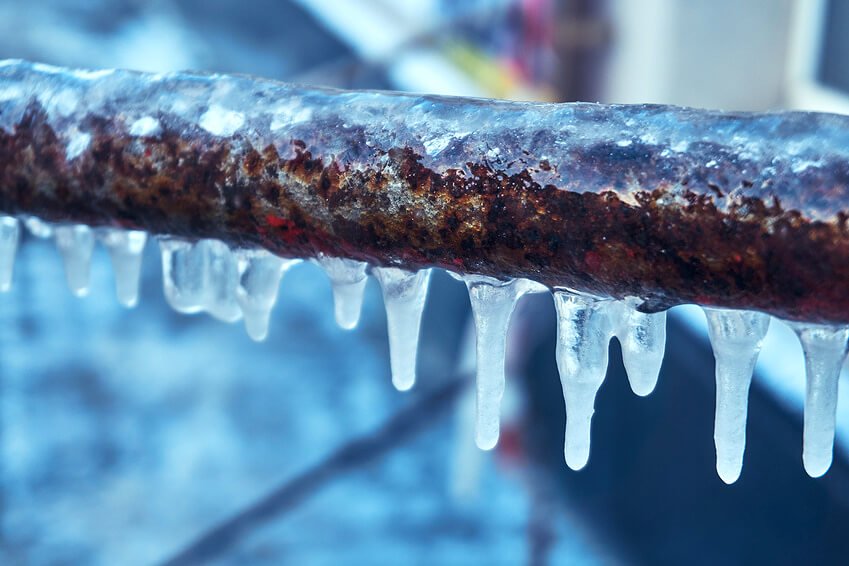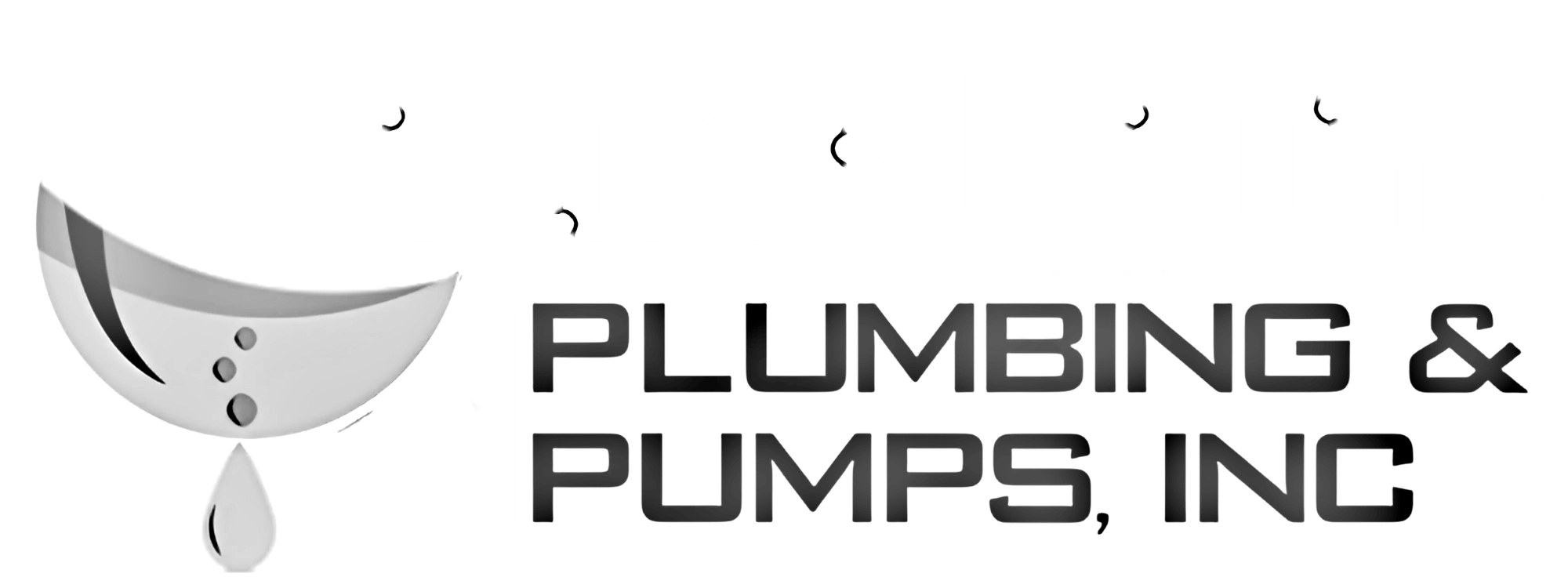A November “Arctic Blast” brought the threat of frozen pipes to homeowners in southern Wisconsin much earlier than usual. In Cross Plains WI and the surrounding area below normal temperatures serve as a wakeup call – and warning of what’s to come. Fall freezing temperatures usually don’t last long enough to do real damage. Now is the time to get ready for the real cold blasts of January.
If you rely upon a water well to provide fresh water to your home, there are pre-season preparations you should be making right now. And even if you don’t have a well, it’s wise to check your pipes, outdoor faucets and lines before sub-zero temperatures arrive.
There are three areas of major concern:
- Frozen water lines – because the well itself is usually far below the frost line, its water rarely freezes. It’s the pipes moving water from the well into the house you worry about. Once water moves above ground it is at risk.
- Mechanical systems – well pumps are often installed above ground and these are the units that need the most attention. Pumps located below ground seldom freeze – but should be inspected, too, to be sure seals and working properly.
- Power sources – well pumps are electric. If the power goes out, so does the water supply. Heavy snow and ice knocking down power lines are a serious threat to your home’s water.
Guard Against Frozen Pipes
When pipes freeze two things are possible: 1. The flow of water is slowed or blocked until the pipe thaws; 2. Ice expands inside the pipe and it bursts, flooding the surrounding area. Research shows it takes as little as three hours for unprotected pipes to freeze. Pipes provide some insulation and water doesn’t freeze as quickly when it is flowing so you don’t need to worry about damaged pipes until the temperature in the space is around 20°F.
Obviously prevention is the answer. There are several things you can do to safeguard pipes, including:
- Insulation – any exposed pipes in basements, attics or crawl spaces should be wrapped with some kind of insulation. That can be additional conventional insulation materials or less common insulators like bubble wrap and heavy fabrics. Custom-fitted foam tubes are available. In vulnerable, poorly-heated areas the more layers the better.
- Bring in heat – in most cases it doesn’t pay to run standard heat ducts to these limited access areas but heat can be added with heating cables. Electrically-powered cables wrapped around the pipes generate just enough heat to keep water above 32° Cables tightly wrapped around the pipe and secured with electrical tape are safe and economical. Modern versions are controlled by a thermostat and only turn on when the temperature approaches freezing.
- Battery backup – in rural areas relying upon well water, a backup generator to maintain electric power to the house and water system is a worthwhile investment.
Pipes providing the link from outdoor water sources to the house need special care:
- Outdoor faucets – disconnect garden hoses from each faucet. And, with water running, close the shutoff value to the outlet. Leaving the water running as you close the valve insures it drains completely.
Protecting Well Water Systems

Any part of an installation above ground is at risk. Even if water doesn’t flow through it. Electronic controls and moving parts never function as efficiently in the cold as they do in milder temperatures. Any water-carrying parts need special attention. Above ground controls should be housed in an insulated structure – from a “fake rock” cover to dedicated well house. In our extreme Wisconsin winters insulation alone may not be enough. Consider supplemental heating for these components, too. In this case, the heating elements warm the space around the components rather than wrapping on them. Potential heat sources include:
- Heat lamps – something as basic as a standard 100-watt bulb left on in a small space.
- Space heaters – small ceramic utility heaters (often called “milk house heaters”) are safe and economical.
There’s a big advantage to using the heaters – they are designed to be heaters, therefor they are more efficient than a light bulb. Heaters emit infrared energy that warms air faster. For additional energy savings, control heaters or lights with thermostatically-controlled switches. Some heaters have these built in.
“What if I’m too late and the above ground pump has already frozen?”
You’ll notice a loss on water pressure before the pipe freezes solid. If the pipe is accessible you can attempt to thaw it. A common hair dryer is the best source of heat. Heat guns and propane torches are far too dangerous. Leave these extreme heat sources to professionals – and don’t hesitate to call in a pro if the situation is serious. Too much heat damages pipe and everything around them.
Once you’ve heated the frozen spot in the pipes enough for water to flow freely again, STOP. Allow moving water to clear its own way.
Don’t Come Home To Frozen Pipes
Are you planning a winter get-away or going to visit friends and family for Christmas? The last thing you want to do when you walk in is deal with water damage.
If you’re going to be away for an extended time there are ways to protect your plumbing. Obviously, you can leave the thermostat set at the same level you have it when you’re home. But, most people set it much lower when they are away for days at a time.
If you set the home’s thermostat at 55°F professional plumbers recommend the following pipe-protecting actions:
- Leave cabinets in bathroom vanities and below kitchen sinks open so pipes receive all the possible warm air.
- Leave one faucet open just a little to keep water moving.
- Shut off the home’s water supply and drain the pipes – open faucets so left-over water drains out. Rather than waste it, you can collect this water for use later for watering houseplants, etc.
Reduce The Risk Of Frozen Pipes
A professional inspection of your well and water system is the first step toward protecting pipes and valuable components. Heading off problems saves money and aggravation.
To be on the safe side, consider a water emergency plan:
- Water on hand – keep a water supply on hand should your normal source be unavailable.
- Backup power – make sure there’s plenty of fuel for your backup generator.
- Keep water flowing – if the power or pump is out but water is still available keep a faucet open to allow a trickle to keep water flowing. Moving water doesn’t freeze.
- Know your system – know where the main shutoff valve is to your house.
- Temporary patch – have a pipe patching kit available to make temporary repairs if a pipe leaks.
- Emergency numbers – keep the phone number of Sauk Plains Plumbing nearby.
Experienced, licensed plumbers at Sauk Plains Plumbing are ready to assist with well water system inspections, installations and repairs. Call 608-798-2121 and we’ll help you keep your system running efficiently all year-round. Don’t worry about frozen pipes in your Cross Plains WI, Verona, Waunakee or Middleton WI home.



